Photo / Video News & Reviews
Scubaverse Underwater Photographer Interview: Thomas Ozanne
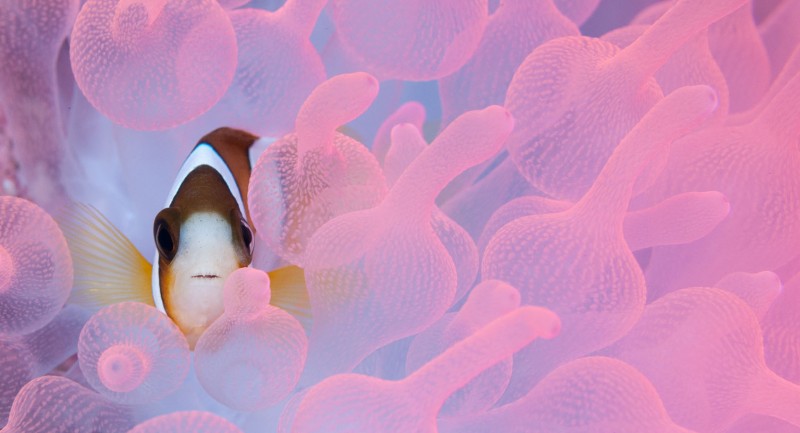
In an ongoing series, Scubaverse.com’s Underwater Photography Editors Nick and Caroline Robertson-Brown talk to underwater photographers from around the world that they admire.
This week’s interview is with Thomas Ozanne.
Nick and Caroline speak to Thomas Ozanne after meeting him at the DEMA show in Las Vegas in 2016.
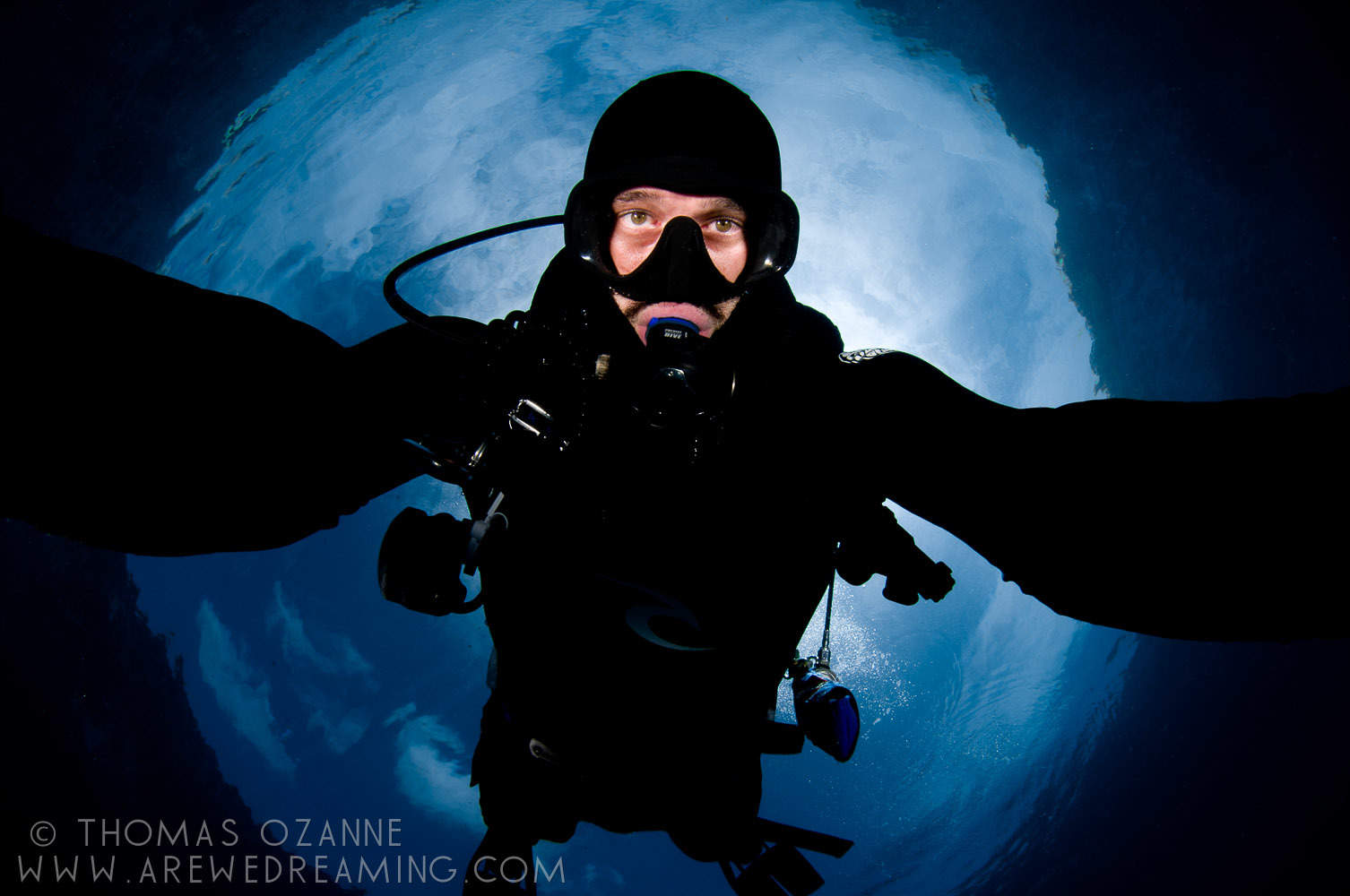
N/C: How did your underwater photography start?
TO: I went on holiday and needed to do something to fill the time so I thought I’d try diving. Fell in love with it immediately. Ended up sticking around much longer than I intended and did my Divemaster course. Almost immediately I landed a job working for the resort I trained with and fairly quickly realised I wasn’t cut out for working the resort reception or taking scuba reviews in the pool. I needed something that could keep me in the water on my own terms and the people I saw around me that had that were making videos, so I took up videography. From there I managed to blag my way in to a job on board a Liveaboard with absolutely no idea what I was doing. After a successful season of shooting videos I realised that it was far too much work (6am till midnight 4 days out of 5 for 6 months) so in the off season I decided to concentrate on shooting stills with my compact camera. I ended up buying an Inon fisheye and close up lenses and a strobe and quickly started getting results I was pleased with. Before too long I realised I hit the limits of the gear I had so decided to sell my video rig and bite the bullet and buy a DSLR set up. After that I took myself off to Sipadan and Palau and shot like crazy. Again with no clue, making it up as I went along. I then made it back to my old Liveaboard and managed to convince the owner to let me shoot photos instead of videos. And based on that I built up a ton of experience diving and shooting. And I think that’s what allowed me to develop my skills and do the kind of work I love to do.
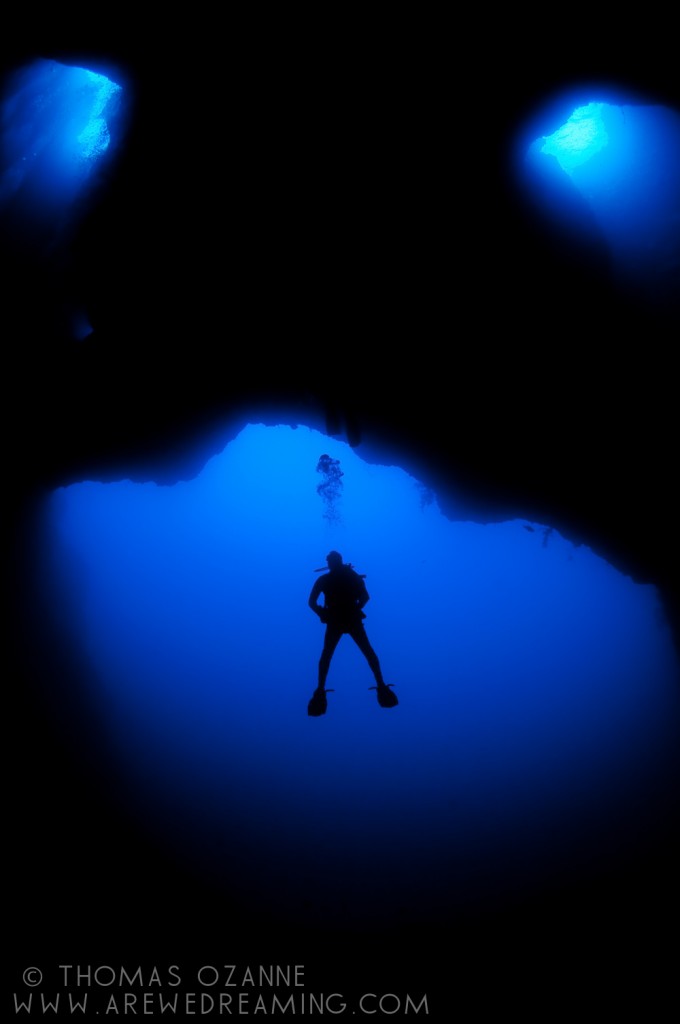 N/C: What is your favourite u/w camera equipment (past & present) & Why?
N/C: What is your favourite u/w camera equipment (past & present) & Why?
TO: Probably top of the list is my Inon 45 degree viewfinder. I had to dive without it once and I was the worst dive of my life. If you buy a DSLR you need to get yourself a magnifying viewfinder of some sort. Craning your neck and squinting through a tiny viewfinder is not going to get you very far.
Secondly I‘d have to say my Tokina 10-17mm fisheye lens. It’s perfect for the way I like to shoot, up close and personal. Super fast to focus and has never missed a beat after being poorly treated for years.
And last but not least would have to be my Subal housings, past and present. They are built like a tanks and just work. No messing around. Thousands of dives and no problems. (Apart from that one time where I wasn’t paying attention during set up and had a slight leak, but that’s totally on me.)
N/C: What would be your advice to anyone new to underwater photography?
TO: Be the best diver you can be. Don’t rush in prioritising the photography if you haven’t nailed your diving, particularly your buoyancy. You’ll stress yourself out, you’ll put yourself and the environment at risk and you will struggle to fully embrace the photography if the diving isn’t second nature to you. That’s it.
Actually there’s more to it than that. Build up lots of diving experience first and then apply the photography. Unfortunately this isn’t always easy, as doing this requires a lot of diving experience that you might not be able to build up if you only dive a handful of times a year. Understandably people want to get on with shooting and maximise every minute of their time under water but I think time spent becoming a good diver will benefit you more in the long run. And without exaggerating too much it could even be the difference between life and death. Diving isn’t an activity to be taken lightly and sadly I see far too many photographers diving like they are invincible. That’s going to bite you in the arse one day.
N/C: What, or who, has been your single biggest inspiration for your underwater photography?
TO: Alex Mustard’s work is a continuing inspiration. He is in a league of his own. Technically and artistically there aren’t many who come close, at least not with his consistency. And Martin Edge’s book was my bible when I started out – I think he owes me some commission for the number of copies I have convinced people they should buy over the years!
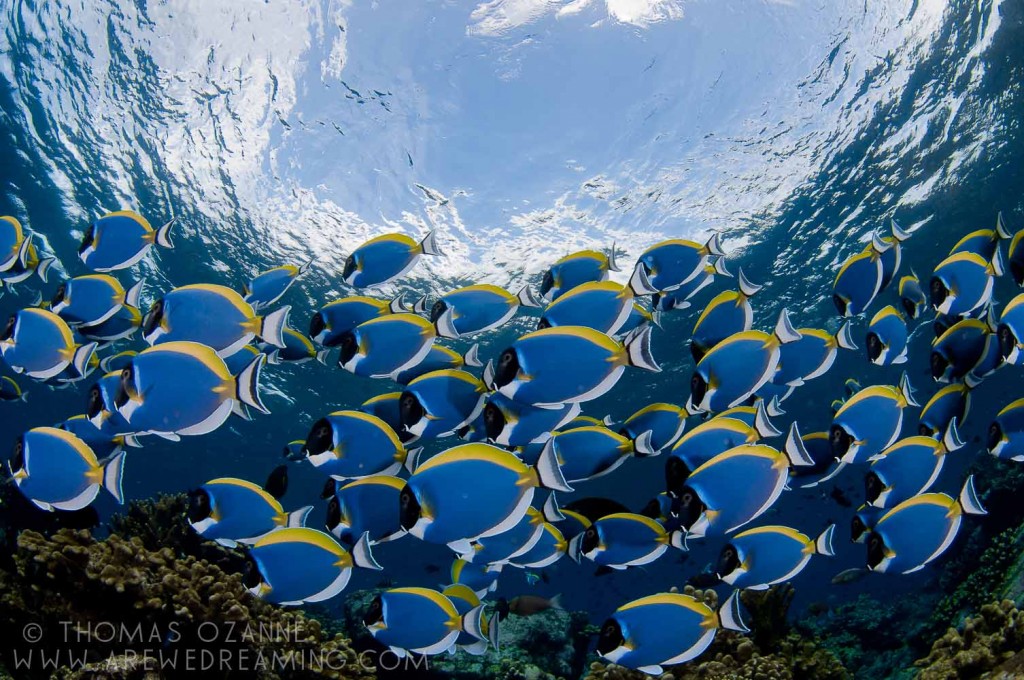
N/C: What are your boundaries on post-editing image manipulation?
TO: I have come to realise that less is more. I never add, and only remove and then only within reason. I don’t use Photoshop, but I think there is a place for it to really polish an image with more control than Lightroom offers. I’m not averse to tweaking the colour of the water column and using dodge and burn techniques with gradients and brushes. And I will not shy away from the spot heal tool to clean up the water column and any of that pesky backscatter, but you are better off learning how to control your lighting than you are spending time clicking away at thousands of sots.
One thing I would say is images need to look natural and balanced. When you are new to post production it’s easy to be a bit heavy handed with your adjustments. I know I was guilty of that when I started. As I have progressed I find myself doing less and less to my images, and I feel this is really the ultimate aim for my photography, to get the shot as best I can in camera and then use the post production to add a final polish to an image. If you spend more time editing images than shooting I think that’s a little back to front. But saying that, skilled use of software to finalise an image is an integral aspect of photography that needs to be embraced. Just be critical of every element of your final image.
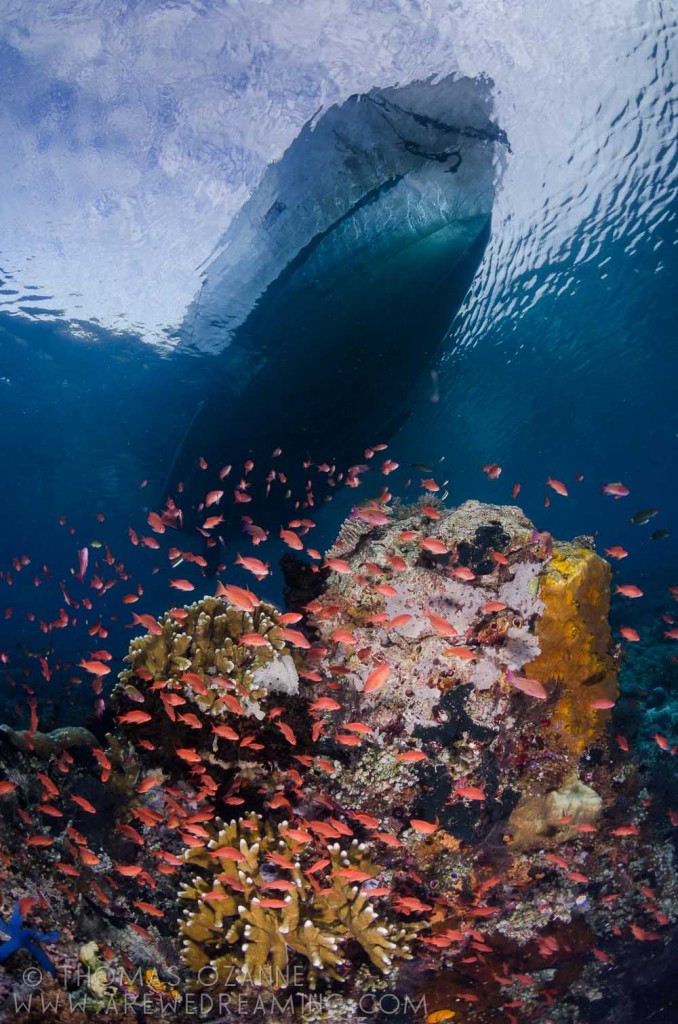 N/C: Where is your favourite dive location, and is it for the photography?
N/C: Where is your favourite dive location, and is it for the photography?
TO: The best diving I have done was in Papua New Guinea. Hands down. Way out in the Coral Sea is an atoll called Easter Fields. It had everything: incredible visibility, amazing pristine corals, huge numbers of schooling fish, and more sharks than I have seen anywhere else (sadly that’s an indictment of the impact humanity has had on sharks more than anything else, in all my diving in Asia I have seen hardly any sharks). And a close joint second comes Palau, Raja Ampat, and Komodo. All incredible places.
N/C: What are you views on marine life manipulation, moving subjects?
TO: Honestly I can’t say that I haven’t encouraged a few creatures to move slightly using a finger or a poker in the past, never actually touching, just corralling gently, but even that is something I have come to feel is unacceptable. I don’t think manipulation has a place in wildlife photography. We are representing nature, and nature doesn’t exist for our convenience. I regularly see shots that most reasonable people could tell are not natural and couldn’t have been achieved without interference. We know the shot must have been gotten with dubious methods, and so does the person that took it, and they have to live with themselves. But then that’s one of the problems isn’t it? Those kind of people just don’t care. They’ll lap up the praise regardless and continue to exploit nature for their own ego.
Over time I have come to realise that my photography is opportunistic. I shoot things that happen in front of me. I don’t want a shot in my portfolio that would never have happened without deliberately interfering with a creature.
That people proudly display such images and even win awards for them occasionally is a shame, and I’m glad that often judges of competitions are hard on an image when this kind of behaviour is suspected. But saying that, some still slip through the net.
N/C: What do you look for when you are making your images?
TO: A nice composition. More than anything else a well composed and structured image is what I look to get. Having complete control of your buoyancy allows you to position yourself in the water column and a decent viewfinder on your housing will allow you to consider every square mm of the frame. One thing that stuck with me from an old teacher of mine was the idea that if something isn’t adding to an image it is taking away. He was referring to design in general but I find is a great thing to keep in mind when shooting images. Everything in your image should be there for a reason. Consider the foreground and the background. Of course there is the subject to consider but don’t forget the horizon, the sun’s position, Snell’s window, the blue gradient of the water, the clouds in the sky, the silhouette of the reef…. all of these elements are yours to control with your positioning in the water. At least for wide-angle they are. For macro it’s all about the subject and a clean or interesting background as something to aim for.
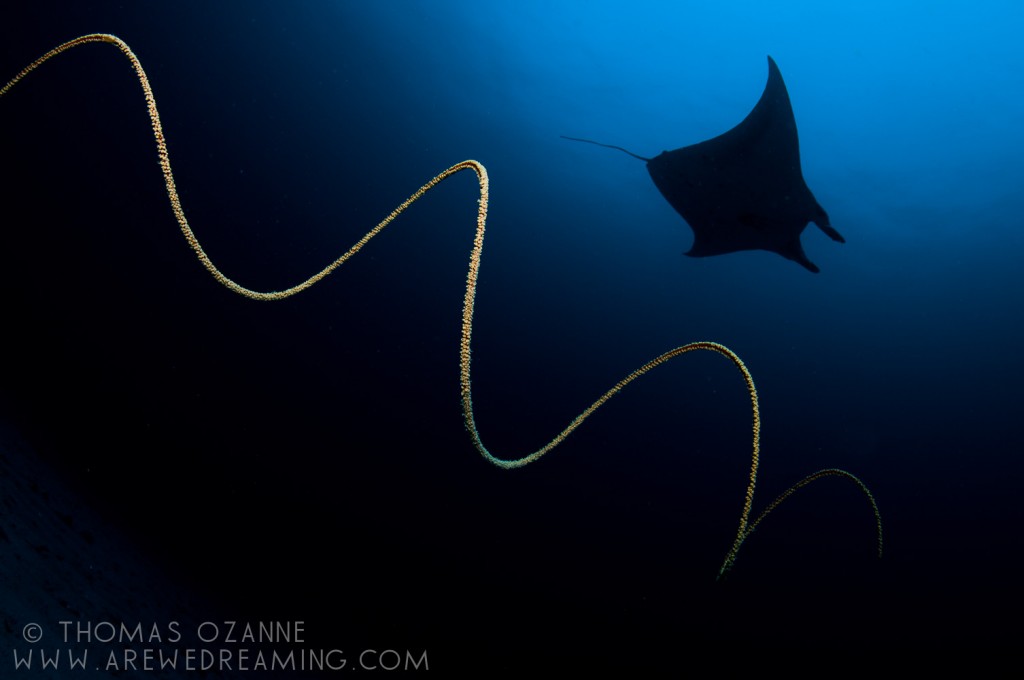
N/C: What motivates you to take u/w photos?
TO: New experiences, and continuously striving to improve my photography. I really enjoy getting wows out of people. And the shots that seem to have that effect are shots that were taken when I myself was thinking “wow, this is so cool”. I love the adventure of diving and the beauty of nature and the skill of good diving and photography and I love that there is always something new to see, something new to learn, and more amazing images to be captured with improved technique.
N/C: If you could photograph any one thing/place what or where would that be?
TO: High on my list is more big stuff, and I guess the ultimate would be whales. A trip to Tonga to meet the humpbacks is calling to me. That and working more with models. I have had some great experiences shooting free divers and intend to do more. I love the sport of free diving and there are some very cool images to be made with the right collaborations.
I just re-read the question and see that you said “any one thing”, so I guess I’ll have to choose. It’s going to have to be whales, isn’t it?
See more of Thomas’ work at www.arewedreaming.com. Find him on Instagram at @arewedreaming
Blogs
Diver Discovering Whale Skeletons Beneath Ice Judged World’s Best Underwater Photograph
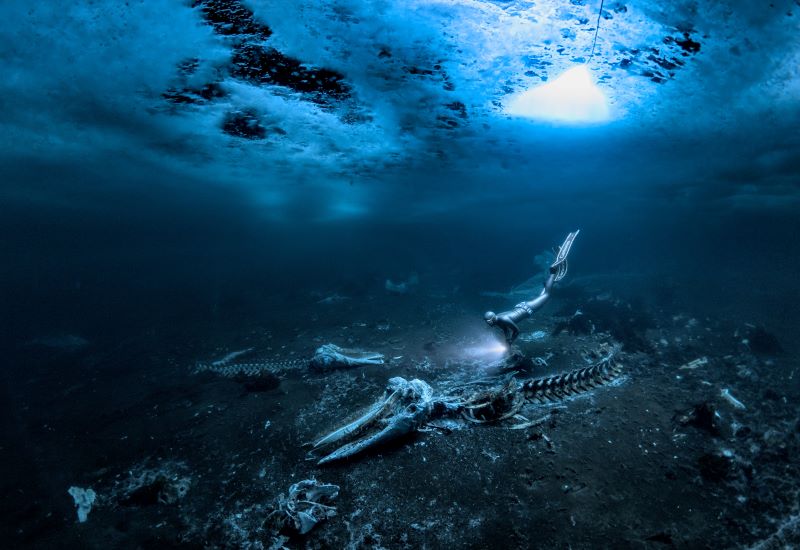
An emotive photograph showing a freediver examining the aftermath of whaling sees
Alex Dawson from Sweden named Underwater Photographer of the Year 2024. Dawson’s
photograph ‘Whale Bones’ triumphed over 6500 underwater pictures entered by underwater
photographers from around the world.
“Whale Bones was photographed in the toughest conditions,” explains chair of judging
panel Alex Mustard, “as a breath-hold diver descends below the Greenland ice sheet to bear
witness to the carcasses. The composition invites us to consider our impact on the great
creatures of this planet. Since the rise of humans, wild animals have declined by 85%. Today,
just 4% of mammals are wildlife, the remaining 96% are humans and our livestock. Our way
needs to change to find a balance with nature.”
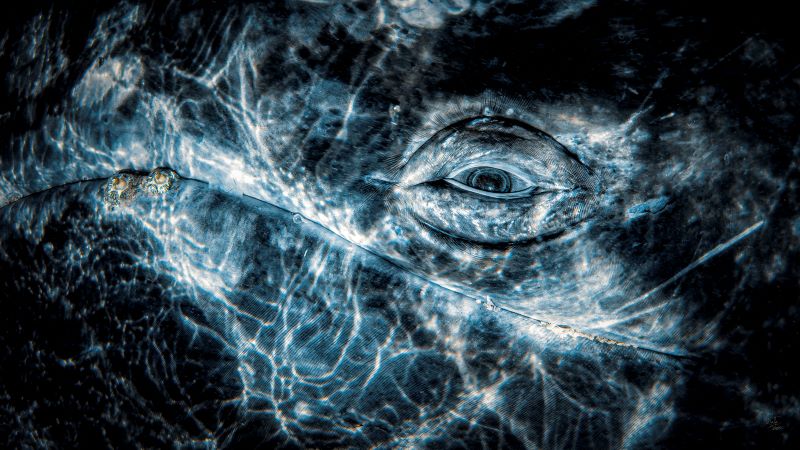
Photo: Rafael
Fernandez Caballero
Whales dominated the winning pictures this year with Spanish photographer Rafael
Fernandez Caballero winning two categories with his revealing photos of these ocean giants:
a close up of a grey whale’s eye and an action shot of a Bryde’s whale engulfing an entire bait
ball, both taken in Magdalena Bay, Baja California, Mexico. Fernandez Caballero took ‘Grey
Whale Connection’ while drifting in a small boat, holding his camera over the side in the water
to photograph the curious whale. ‘The End Of A Baitball’ required Fernandez Caballero to dive
down and be in exactly the right place at the moment the whale lunged. “The photo shows
the high speed attack,” he said, “with the whale engulfing hundreds of kilograms of sardines
in one bite — simply unforgettable to see predation on such a scale.”
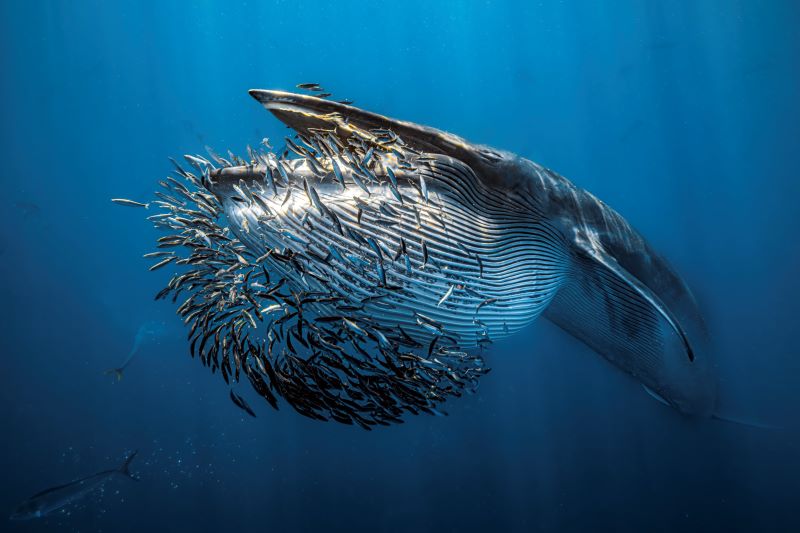
Photo: Rafael
Fernandez Caballero
Lisa Stengel from the United States was named Up & Coming Underwater Photographer of the Year 2024 for her image of a mahi-mahi catching a sardine, in Mexico. Stengel used both a very fast shutter speed and her hearing to catch the moment. “If you listen there’s an enormous amount of sound in the ocean,” she explained. “The action was too fast to see, so I honed in on the sound of the attacks with my camera to capture this special moment.”
“It is such an exciting time in underwater photography because photographers are capturing such amazing new images, by visiting new locations and using the latest cameras,”
commented judge Alex Mustard. “Until this year I’d hardly ever see a photo of a mahi mahi,
now Lisa has photographed one hunting, action that plays out in the blink of an eye.”
The Underwater Photographer of the Year contest is based in the UK, and Jenny Stock,
was named as British Underwater Photographer of the Year 2024 for her image “Star
Attraction”, which finds beauty in species of British wildlife that are often overlooked.
Exploring the west coast of Scotland, Stock explained “in the dark green depths my torch
picked out the vivid colours of a living carpet of thousands of brittle stars, each with a
different pattern. I was happily snapping away, when I spotted this purple sea urchin and I
got really excited.”
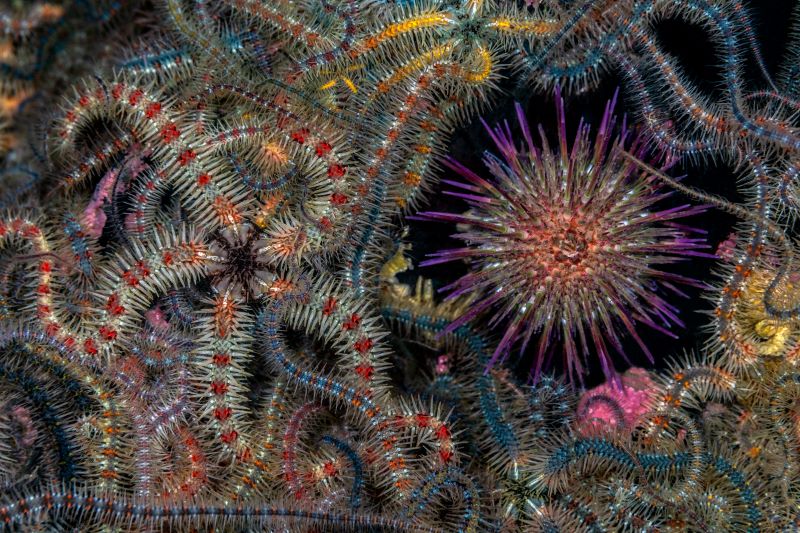
Photo: Jenny Stock
In the same contest, Portuguese photographer, Nuno Sá, was named ‘Save Our Seas
Foundation’ Marine Conservation Photographer of the Year 2024, with his photo ‘Saving
Goliath’, taken in Portugal. Sá’s photo shows beachgoers trying to save a stranded sperm
whale. The picture gives us hope that people do care and want to help the oceans, but also
warns us that bigger changes are needed. “The whale had been struck by a ship and its fate
was sealed,” explains Sá. “An estimated 20,000 whales are killed every year, and many more
injured, after being struck by ships-and few people even realise that it happens.”
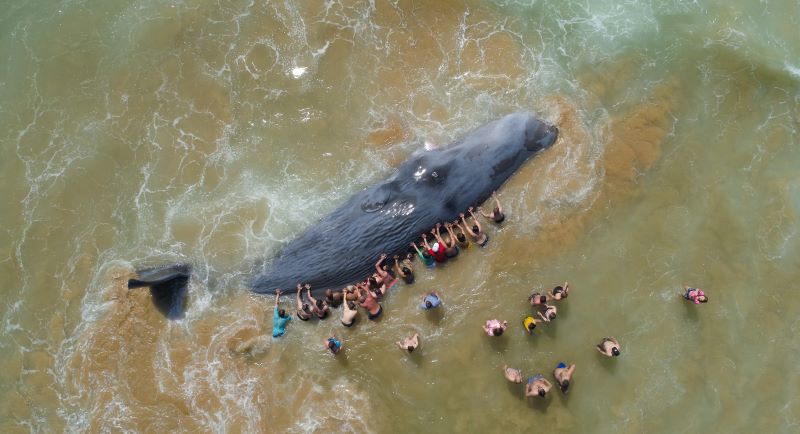
Photo: Nuno Sá
More winning images can be found at www.underwaterphotographeroftheyear.com.
About Underwater Photographer of the Year
Underwater Photographer of the Year is an annual competition, based in the UK, that celebrates photography beneath the surface of the ocean, lakes, rivers and even swimming pools, and attracts entries from all around the world. The contest has 13 categories, testing photographers with themes such as Macro, Wide Angle, Behaviour and Wreck photography, as well as four categories for photos taken specifically in British waters. The winners were announced in an award ceremony in Mayfair, London, hosted by The Crown Estate. This year’s UPY judges were experienced underwater photographers Peter Rowlands, Tobias Friedrich and Dr Alexander Mustard MBE.
Header image: Underwater Photographer of the Year 2024 winner Alex Dawson
News
World’s Best Underwater Photographers Unveil Breathtaking Images at World Shootout 2023
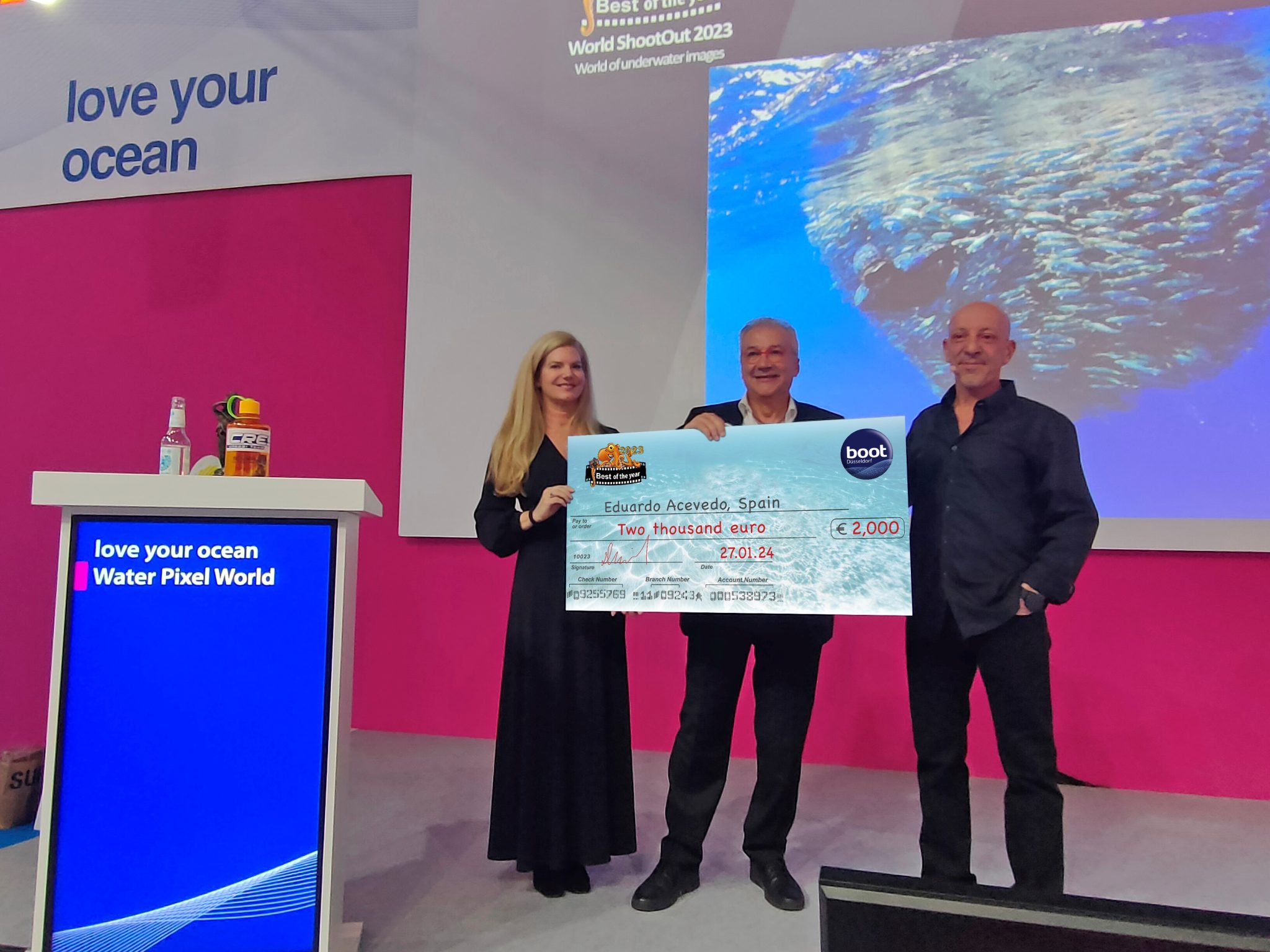
The winners of the prestigious World Shootout 2023 underwater photography competition were announced at this year’s BOOT Show, captivating audiences at the world’s largest diving and water sports exhibition in Dusseldorf, Germany. Hundreds of photographers from 54 countries competed across nine categories, pushing the boundaries of creativity and technical skill.
Grand Prize Winners
- Picture of the Year: Spanish photographer Eduardo Acevedo “secured” the top Honor with the prestigious prize the “boot Dusseldorf Director’s Prize, earning an Andromeda statuette and a €2,000 cash prize.
- Best 5 Images Portfolio: Luc Rooman from Belgium triumphed in this category, winning a dream 4-week diving trip for two to Papua New Guinea, valued at $18,900.
- Amateur Photographer: Alexandra Ceurvorst from the USA impressed the judges with her talent, taking home the 1,000 € cash prize award.
Celebrating Diversity and Innovation
This year’s competition saw 11,680 entries from 964 photographers, showcasing a remarkable spectrum of skills and perspectives. From the intricate wonders of Macro photography to the beauty of “Black Water”, the “Underwater Fashion” category added a touch of artistry and innovation, while the ever-important ” Environmental & Conservation” category served as a powerful reminder of the need to protect these fragile ecosystems.
Looking Ahead: AI and Ocean Conservation
World Shootout founder and producer David Pilosof unveiled an exciting addition for the 2024 competition: this year the Environmental category will be focusing on the impact of plastic on our oceans and future.
This category will embrace the potential of AI or other editing software as a tool to amplify the conservation message.
Entrants will submit campaigns of three original underwater photographs dealing with plastic pollution, along with their final AI assistance processing. This innovative approach encourages artistic expression while raising awareness about a critical environmental issue.
Explore the Stunning Collection
Discover the complete album of competition entries by clicking here.
For Low-resolution photos of finalist entries in eight categories, click here.
-

 News3 months ago
News3 months agoHone your underwater photography skills with Alphamarine Photography at Red Sea Diving Safari in March
-

 News2 months ago
News2 months agoCapturing Critters in Lembeh Underwater Photography Workshop 2024: Event Roundup
-

 Marine Life & Conservation Blogs2 months ago
Marine Life & Conservation Blogs2 months agoCreature Feature: Swell Sharks
-

 Blogs2 months ago
Blogs2 months agoMurex Resorts: Passport to Paradise!
-

 Blogs2 months ago
Blogs2 months agoDiver Discovering Whale Skeletons Beneath Ice Judged World’s Best Underwater Photograph
-

 Gear News3 months ago
Gear News3 months agoBare X-Mission Drysuit: Ideal for Both Technical and Recreational Divers
-

 Gear Reviews2 months ago
Gear Reviews2 months agoGear Review: Oceanic+ Dive Housing for iPhone
-

 Marine Life & Conservation2 months ago
Marine Life & Conservation2 months agoSave the Manatee Club launches brand new webcams at Silver Springs State Park, Florida
















